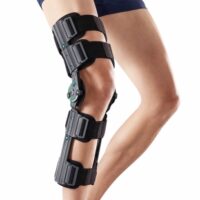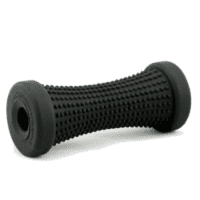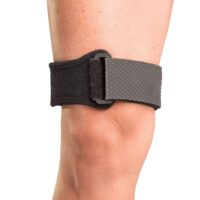Patella Enthesopathy
Article by John Miller
Patella Enthesopathy
Understanding Causes, Symptoms, and Effective Treatment
Knee pain can drastically affect your quality of life, especially when it’s due to conditions like patella and quadriceps enthesopathy and tendinopathy. Differentiating between these conditions is crucial for effective management and recovery. This article explores these conditions from a physiotherapist’s perspective, focusing on excellence in sports, spinal, muscle, joint, and healthcare.
Why Do These Conditions Occur?
Patella enthesopathy and quadriceps tendinopathy occur when there’s inflammation or degeneration at the attachment points of the patellar and quadriceps tendons. These conditions often develop due to repetitive stress, overuse, or biomechanical imbalances. Engaging in activities that involve frequent jumping, running, or squatting can lead to these issues, especially if proper form or technique is not maintained.
How Do These Conditions Affect You?
Patella enthesopathy targets the attachment points of the patellar tendon, causing pain and tenderness at the insertion sites, particularly during physical activities. Quadriceps enthesopathy, on the other hand, affects the attachment points of the quadriceps tendon at the patella, leading to pain and discomfort at the upper portion of the kneecap. These conditions can coexist or be part of the same underlying pathology, making it essential to distinguish between them for appropriate treatment.
What Are the Solutions?
Effective treatment begins with an accurate diagnosis from your physiotherapist or doctor. Here’s how each condition is typically managed:
Patella Enthesopathy
- Activity Modification: Reducing strain on the affected area is crucial. Your physiotherapist may recommend modifying your activities to allow healing.
- Stretching and Strengthening Exercises: Exercises targeting the quadriceps and surrounding muscles, particularly isometric exercises, can help reduce pain and improve function.
- Local Treatments: Therapies such as ultrasound, laser treatment, and injections may be used to reduce inflammation and promote healing.
- Orthotics and Bracing: Correcting biomechanical imbalances with orthotics or knee braces can alleviate symptoms.
- Pain Management: Tailored approaches, including medication and physical therapy, are essential for relief.
Quadriceps Tendinopathy
- Eccentric and Isometric Exercises: These exercises strengthen the affected tendon, reducing pain and improving function.
- Load Management: Gradually increasing exercise intensity and duration helps prevent further injury.
- Manual Therapy: Techniques like massage and mobilisation can provide relief and improve mobility.
- Orthotics and Supports: Using knee supports or orthotics can reduce strain on the tendon, aiding in recovery.
- Pain Management: Ice, heat, and anti-inflammatory medications may be used to manage symptoms.

Conclusion
Understanding the differences between patellar tendinopathy and quadriceps tendinopathy and enthesopathy is vital for effective treatment and recovery. If you’re experiencing knee pain, consulting a physiotherapist is essential for an accurate diagnosis and a personalised treatment plan.
What to Do Next?
If you’re struggling with knee pain, it’s crucial to seek professional advice from a physiotherapist. Early intervention can prevent further damage and help you return to an active, pain-free life. Book an appointment today to start your journey towards recovery.
Rochedale - Call 38410277
Book Online: Rochedale Salisbury - Call 32751044
Book Online: Salisbury Sandgate - Call 32691122
Book Online: Sandgate
Patella Enthesopathy FAQs
1. What is Patella Enthesopathy?
Patella enthesopathy is a condition where inflammation occurs at the attachment points of the patellar tendon, causing pain and tenderness around the kneecap.
2. How is Patella Enthesopathy Diagnosed?
A physiotherapist can diagnose patella enthesopathy through a physical examination, often supported by imaging studies like an MRI or ultrasound.
3. What Are the Symptoms of Patella Enthesopathy?
Symptoms include pain, swelling, and tenderness at the front of the knee, particularly during activities such as jumping or running.
4. How is Patella Enthesopathy Treated?
Treatment involves activity modification, stretching and strengthening exercises, local treatments, and pain management strategies.
5. Can Patella Enthesopathy Be Prevented?
While it may not always be preventable, maintaining proper biomechanics during physical activities and engaging in regular stretching and strengthening exercises can reduce your risk.
6. Is Surgery Needed for Patella Enthesopathy?
Surgery is rarely required and is usually considered only when conservative treatments fail. Most cases respond well to physiotherapy.

Related Articles
- Patellar Tendinopathy – This article offers insights into the condition affecting the patellar tendon, with a focus on knee pain causes.
- Quadriceps Tendinopathy – Explore the symptoms and treatments for issues related to the quadriceps tendon.
- Effective Tendinopathy Physiotherapy Treatment Strategies – Discover comprehensive treatment strategies for various tendinopathies, focusing on pain management and recovery.
- Tendinopathy: Causes, Symptoms, And Effective Treatments – A detailed guide on the progression, causes, and treatments of tendinopathy.
- Chondromalacia Patella – Learn about the causes and treatments for knee pain arising from chondromalacia patella.
- Management of Fat Pad Syndrome – Insights and tips on managing fat pad syndrome, a condition that can cause knee pain.
- Osgood-Schlatter Disease – Information on managing knee pain caused by Osgood-Schlatter disease, common in young athletes.
- Patellofemoral Pain Syndrome (PFPS) – A comprehensive guide to understanding and treating PFPS, a common cause of knee pain.
- Knee Bursitis – An overview of knee bursitis, including symptoms, causes, and treatments for this condition that can lead to significant knee pain.
- Baker’s Cyst – Explains the symptoms and treatments for Baker’s cyst, offering insights into this knee-related condition.
- Management of Patellar Tendinopathy – British Journal of Sports Medicine – Explore effective management strategies for patellar tendinopathy.
- Shockwave Therapy for Tendon Injuries – Clinical Rehabilitation – Learn about the benefits of shockwave therapy in treating tendon injuries.
- Eccentric Exercise and Tendinopathy – Journal of Sports Science & Medicine – Understand the role of eccentric exercise in treating tendinopathy.
Social Media
Follow Us for Free Tips
Stay up-to-date with the latest tips on managing knee pain and other musculoskeletal conditions by following us on our social media platforms. We regularly share valuable insights and practical advice to help you stay active and healthy.





















































































